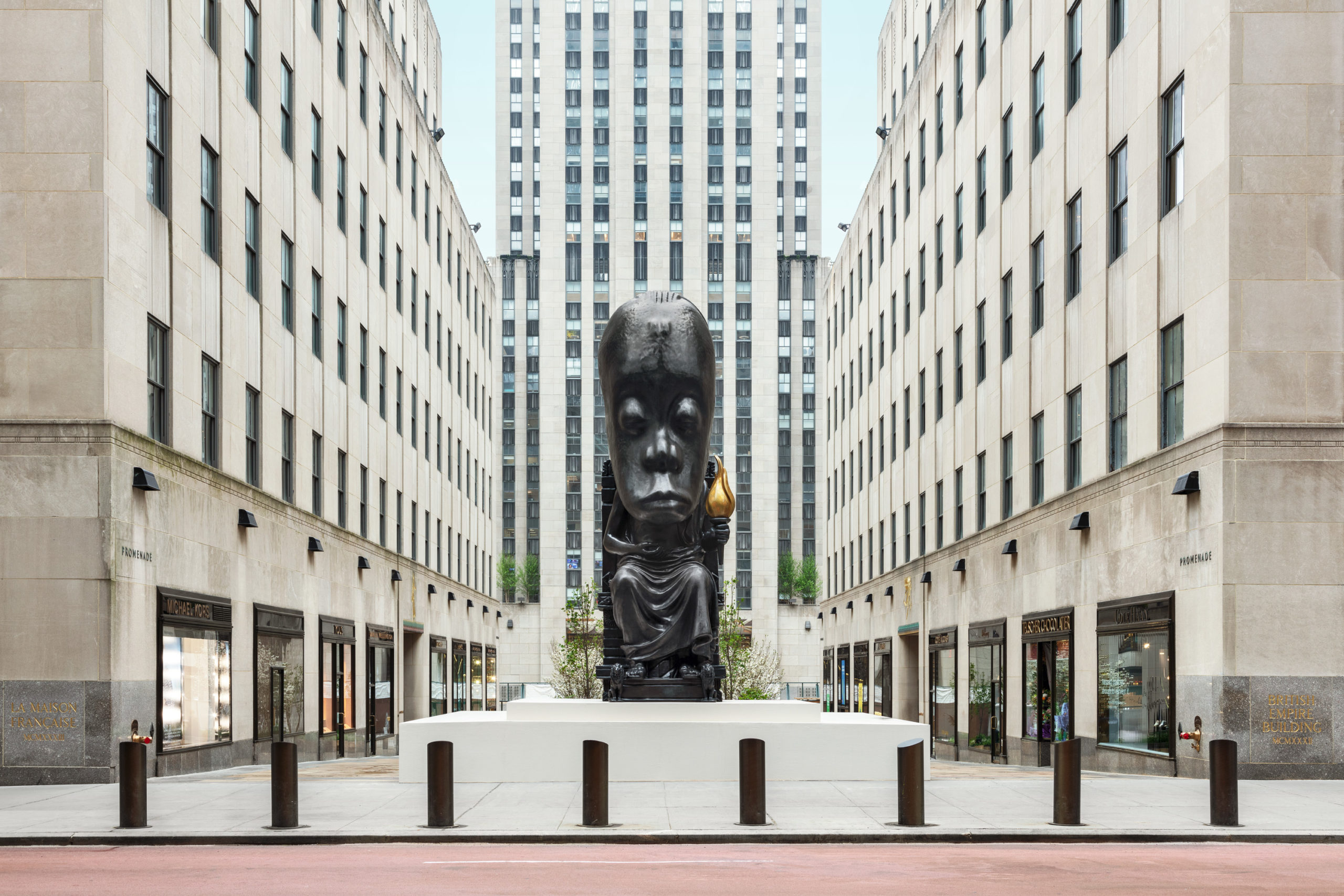Between symbolism and history, his practice is a mix of elements ranging from marble to fabrics, which reinterpret facts of the past through a contemporary lens in paintings, sculptures, installations, videos, films and performances. African-American artist Sanford Biggers’ (b. Los Angeles, 1970) aim is to invite the viewer to experience a story as an active part of his work, where new channels are opened, identifying oneself to reach an understanding of the past in a contemporary way. Indeed, his art refers to African-American ethnography through music, urban culture, religion and spirituality, all essential for his production. His works test the collective imagination and highlight the message through the medium, through his form. Since 2014, inspired by some quilts received from the descendants of slave owners, Biggers somehow abandons painting made on a classic support, to devote himself to painting on quilts. His first embroidered works were installed in 2009 in the Mother Bethel African Methodist Episcopal Church in Philadelphia.
Biggers earned his BA from Morehouse College in Atlanta (Georgia), an MFA from the School of the Art Institute in Chicago, and in 1998 attended the Skowhegan School of Painting and Sculpture. Among his first successes is the work “Mandala of the B-Bodhisattva II”, which was included in the exhibition Freestyle, curated by Thelma Golden at the Studio Museum in Harlem in 2001. This was followed by exhibitions throughout the world, at the Whitney Museum, Tate Modern, and the Brooklyn Museum. The work of Biggers – who was also an Assistant Professor of Visual Arts at Columbia University and was named the Dr. Martin Luther King, Jr. Visiting Professor and scholar in the Department of Architecture at MIT – is characterised by meditation and improvisation. He has won numerous awards such as the Art Award from the American Academy of Arts and Letters (2018), he was inducted into the New York Foundation for the Arts Hall of Fame the following year, and last year received the 26th Heinz Award for the Arts.
In this exclusive interview coinciding with a new exhibition opening in Hong Kong with the Massimo De Carlo Gallery, Biggers (who lives and works in New York) tells FRONTRUNNER about his first steps. Let’s start from the origin.

Photo credit: Matthew Morrocco
You were born in Los Angeles, you lived in Japan for a long time, and then in Europe. What kind of relationship do you have with Africa?
I’ve visited several countries in Africa for various projects and research, but I’d say my relationship started as a child growing up in an Afrocentric community and being inspired by books, music, and events throughout the African Diaspora. I also knowingly idealised aspects I’d learned about different African cultures as an alternative to the social/racial dysfunction and pathology I saw playing out in the governmental policies and legacies of the US.
Continue on Frontrunner Magazine.
